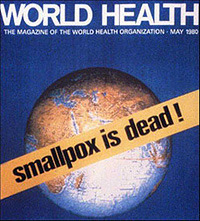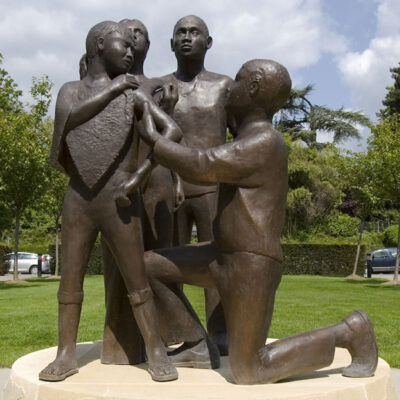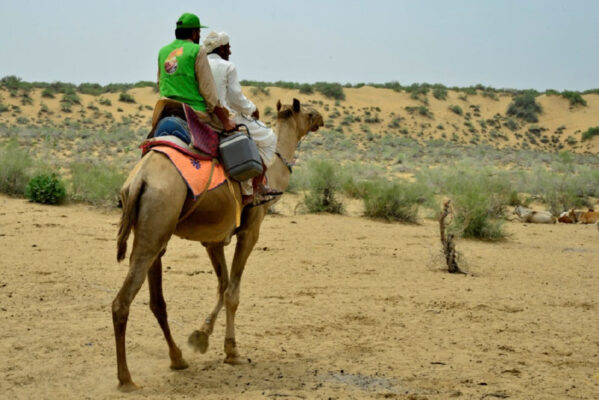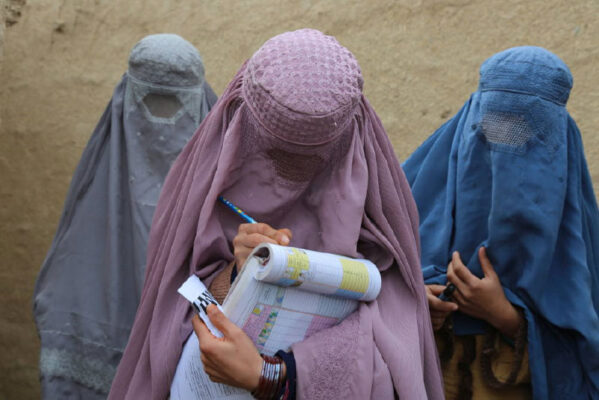 ‘Smallpox is dead!’ The iconic cover of the WHO’s World Health magazine in 1980 marked the end of a long process. An unprecedented global vaccination campaign was followed by a robust process for declaring the world to be free of smallpox for good.
‘Smallpox is dead!’ The iconic cover of the WHO’s World Health magazine in 1980 marked the end of a long process. An unprecedented global vaccination campaign was followed by a robust process for declaring the world to be free of smallpox for good.
The work of millions of health professionals, immunisation programme managers, and parents ensured that vaccines reached every country of the world. It then fell to a small number of experts, pictured below, to check and check and check again that the virus had truly been vanquished.

Getting it wrong would have been disastrous, undermining public confidence in vaccination, in science and in the capacity of global organisations to deliver giant leaps forward for humanity.
Thankfully, they got it right. Smallpox was gone.

Eradication 2.0
Today, there is growing optimism that polio will become the second human disease in history to be consigned to history thanks to vaccination. The Global Polio Eradication Initiative, launched in 1988, has been a stunning success. While its initial goal of wiping out the disease before the dawn of the 21st century was not reached, it has dramatically cut the number of cases of the disease.
The last mile of this marathon effort has proven the toughest, with the virus holding out in hard-to-reach areas such as the mountainous regions of Afghanistan and Pakistan. But thanks to sustained global commitment, and breath-taking levels of bravery and sacrifice from local leaders and health workers, the end is near.
Some, including Bill Gates, believe the last polio case could be recorded this year. But, even if this prediction proves prophetic, it does not mean the end of polio. Experts in every region of the world will have to ensure not only an absence of polio cases but an absence of polio viruses.
Professor David Salisbury, Chair of the Global Certification Commission of the Eradication of Polio, is leading the group that may one day declare polio to be eradicated. He was part of a Global Advisory Group which, more than 20 years ago, set the world on course to wipe out the disease. Now he may become one of six signatories to sign the death certificate of the poliomyelitis. But how will he know when to tell the world that the job is done?
‘We have to prove that there is no polio virus left in the world because the consequences of getting that wrong could be very serious,’ he said in an interview with the Global Polio Eradication Initiative. ‘We have to prove beyond doubt – demonstrated by independent people – that polio has indeed gone, and gone with certainty.’
Every country has to have a national certification committee, independent of the government and of the people running the polio immunisation programme. These committees are experts qualified to state that their country has interrupted polio transmission. This feeds into a regional committee which is in a position to declare that their region is polio free.

Virus hunters
The Global Certification Commission (GCC) has six members who pore over data from all of the countries in the world looking. They look at data not just at confirmed cases of disease but on cases of paralysis which could have been caused by polio infection.
The GCC also looks at data from environmental studies where sewage samples have been tested for polioviruses and at studies on healthy children at high risk, for instance in migrant/refugee camps.
Countries where no cases have been seen for decades will also be held to a high standard to ensure there are no polio viruses and if there are laboratories holding or working on polioviruses, they will have to show that they have reduced the risks of inadvertently releasing viruses to the absolute minimum.
‘The six of us will have a very responsible task,’ explains Prof Salisbury who is also a member of the Vaccines Today Editorial Board. ‘We will look at all the data, country by country and region by region. Only when we are fully satisfied will we certify the world as free of polio.’

‘This is not about cases. This is about viruses,’ says Prof Salisbury. ‘We are going to have to hunt down viruses. I will be satisfied when all of the surveillance shows no virus – we should move beyond thinking only about cases’.
While there is still some distance to travel to verify the eradication of polio, it is reasonable to hope that Prof Salisbury’s signature may one day mark a permanent end to a dreaded disease.




Robert Davis
March 10th, 2018
To me, there is a need for three years of negative findings after the last case of WPV or of VDPV or of positive finding from environmental sampling. That, of course, is a more rigorous standard than in 1988, but back then we didn’t know about VDPV.
As the Borno WPV cases have shown, special attention has to go to places with access issues. Here, one has to think, e.g,, about South Sudan, Yemen, and the rural areas of the Central African Republic. Proving a negative is not an easy task.
Gary Finnegan
March 27th, 2018
Fair points Robert. I have the impression from Prof Salisbury that they will be quite cautious about declaring the ‘end’ of polio and will indeed need to see no cases (so to speak) for several years and also be as sure as reasonably possible that the virus is no longer in the environment.
Jonathan
March 10th, 2018
Please correct the year GPEI was launched to 1988.
Gary Finnegan
March 27th, 2018
Thanks Jonathan,
This has now been updated.
Gary